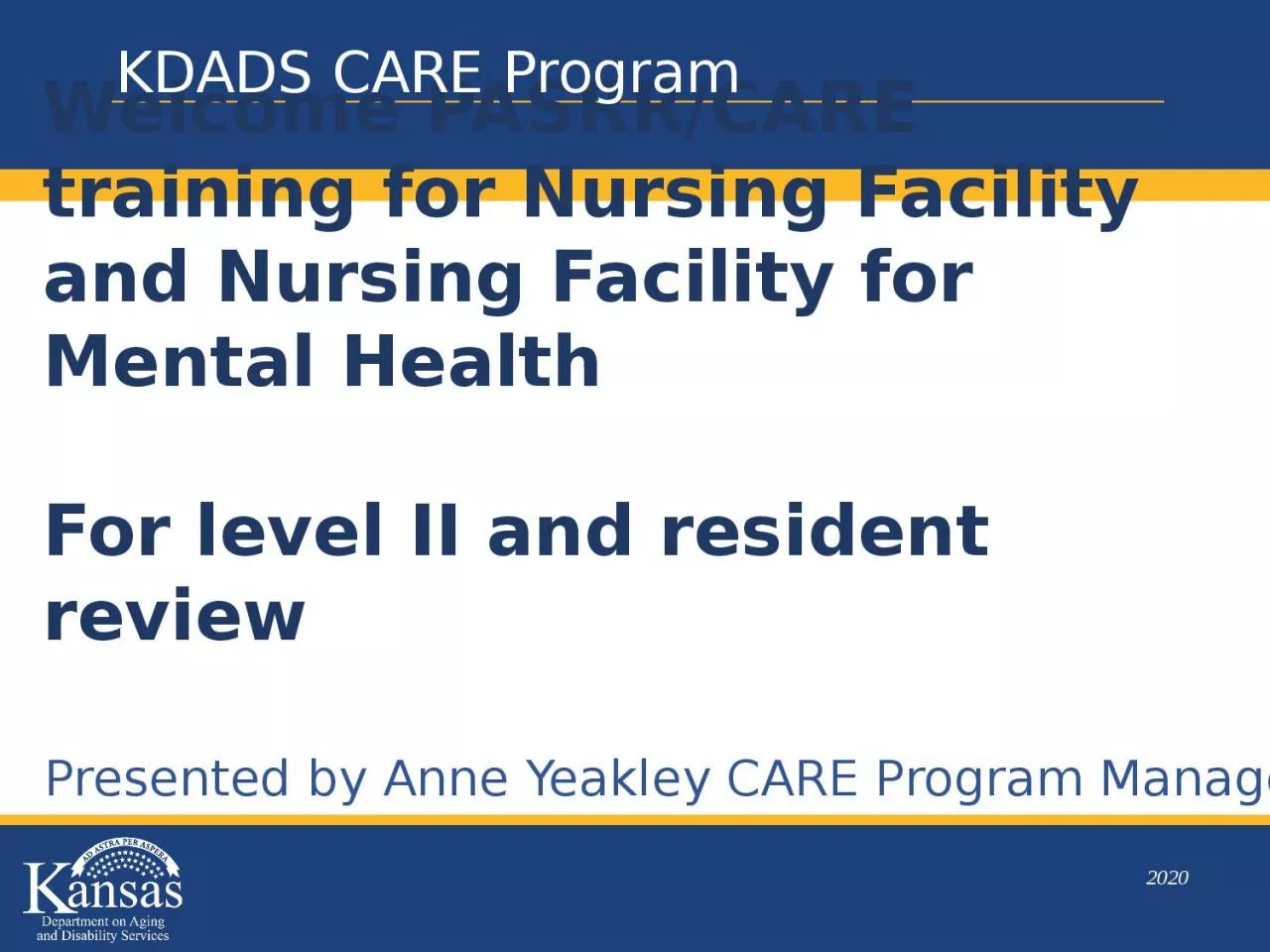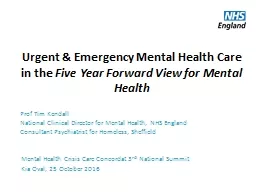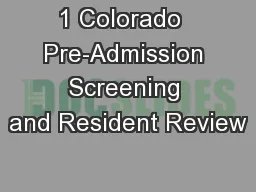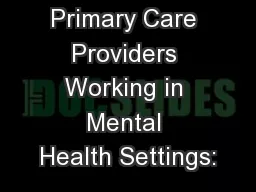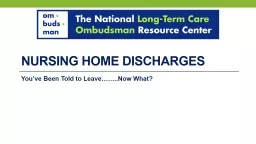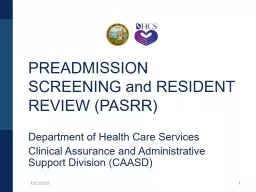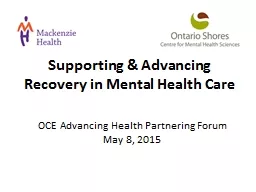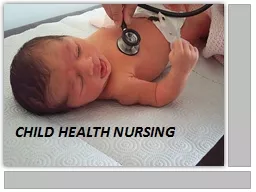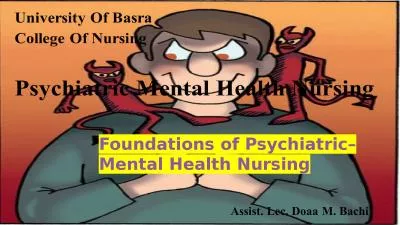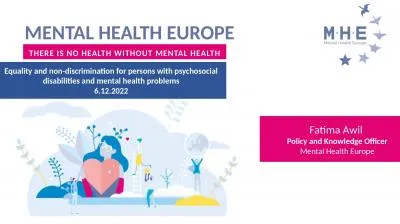PPT-Welcome PASRR/CARE training for Nursing Facility and Nursing Facility for Mental Health
Author : jalin | Published Date : 2024-01-13
For level II and resident review 2020 Presented by Anne Yeakley CARE Program Manager KDADS CARE Program To ask questions during the training make sure you go to
Presentation Embed Code
Download Presentation
Download Presentation The PPT/PDF document "Welcome PASRR/CARE training for Nursing ..." is the property of its rightful owner. Permission is granted to download and print the materials on this website for personal, non-commercial use only, and to display it on your personal computer provided you do not modify the materials and that you retain all copyright notices contained in the materials. By downloading content from our website, you accept the terms of this agreement.
Welcome PASRR/CARE training for Nursing Facility and Nursing Facility for Mental Health: Transcript
Download Rules Of Document
"Welcome PASRR/CARE training for Nursing Facility and Nursing Facility for Mental Health"The content belongs to its owner. You may download and print it for personal use, without modification, and keep all copyright notices. By downloading, you agree to these terms.
Related Documents

